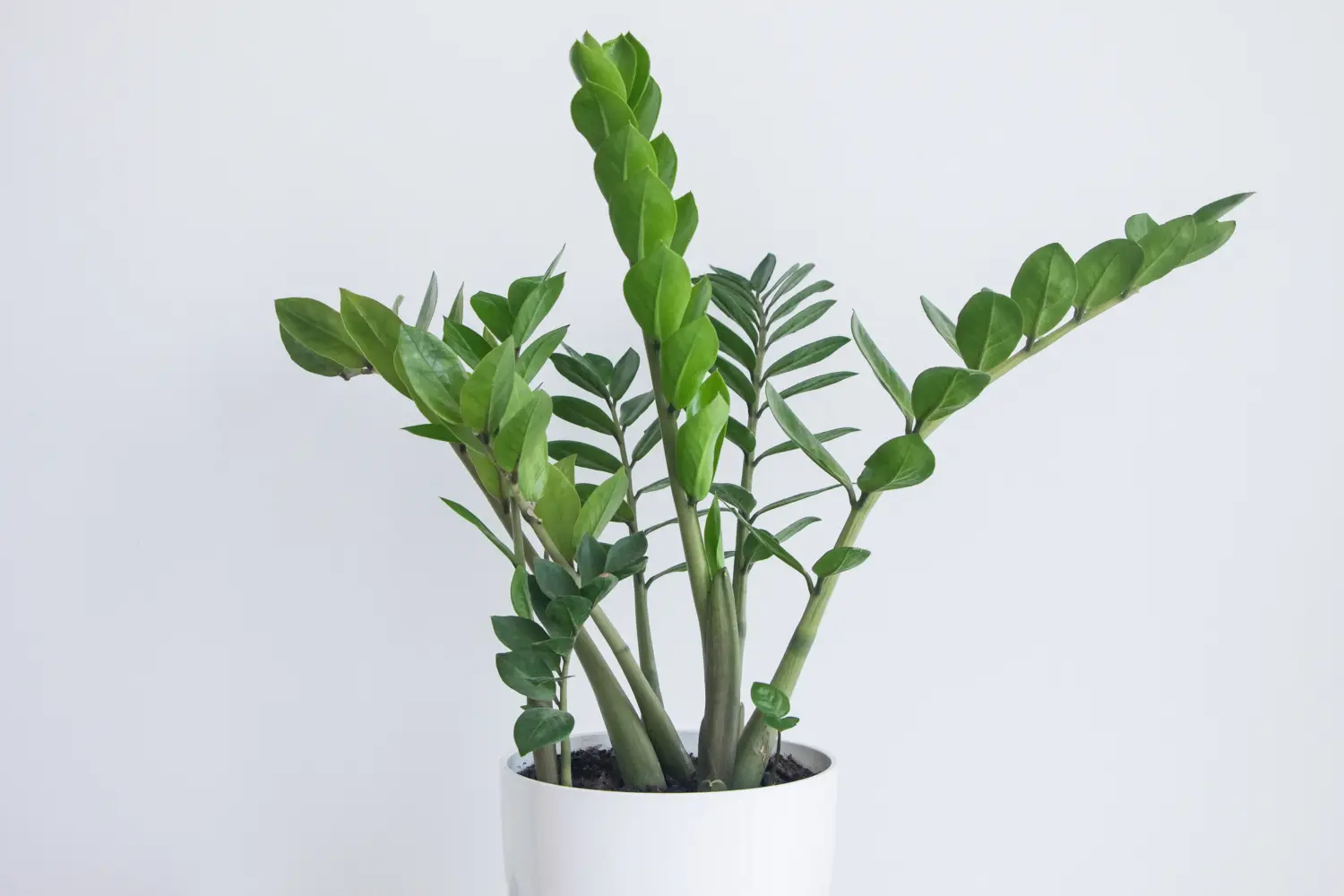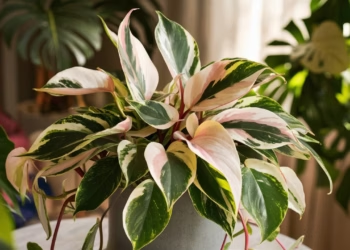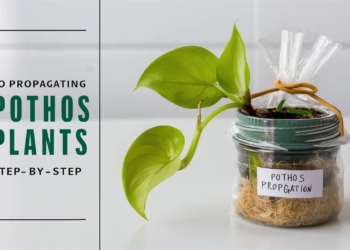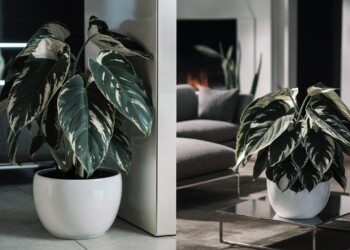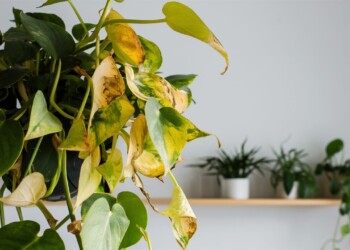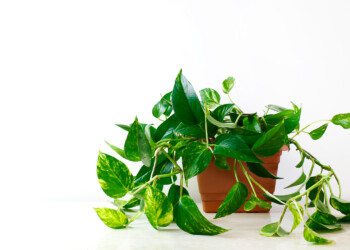Welcome to the ultimate guide on mastering zz plant care: (Zanzibar Gem) Growing & Care indoor guide and Tips! Are you ready to embark on a journey of nurturing and cultivating one of the most resilient and aesthetically pleasing houseplants? The Zanzibar Gem, also known as the zz plant, is a popular choice for indoor plant enthusiasts due to its low maintenance requirements and striking appearance. In this comprehensive guide, we will delve into everything you need to know to ensure your Zanzibar Gem thrives in your indoor oasis. From proper watering techniques to ideal lighting conditions, we’ve got you covered!
Table Of Contents
Getting Started with zz Plant Care
So, you’ve decided to add a touch of greenery to your home with a Zanzibar Gem? Excellent choice! Let’s kick things off by laying down the groundwork for successful zz plant care: (Zanzibar Gem) Growing & Care indoor guide and Tips.
Choosing the Right Location
Where you place your Zanzibar Gem can significantly impact its growth and overall health. Follow these tips to select the perfect spot:
Ensure adequate indirect sunlight: Zanzibar Gems plants exhibit a remarkable tolerance for low-light conditions, making them ideal candidates for spaces with limited natural light. While they can endure partial shade, providing . Avoid placing them in direct sunlight, as this can scorch their leaves. Ideal temperature: Aim for temperatures between 65-75°F (18-24°C). These plants can tolerate slightly cooler conditions but may suffer in extreme cold. Space considerations: Choose a location with enough space for your zz plant to grow unhindered. Keep in mind that they can reach heights of up to three feet!
Potting and Soil
Proper potting and soil are crucial for zz plant care. Follow these guidelines for optimal results:
Use well-draining soil: Zanzibar Gems prefer soil that drains well to prevent root rot. A mixture of potting soil and perlite or sand works wonders. Choose the right pot: Opt for a pot with drainage holes to prevent water from pooling at the bottom. Repotting: These plants are slow growers and can thrive in the same pot for several years. However, if your Zanzibar Gem outgrows its container, consider repotting it into a slightly larger pot.

Nurturing Your Zanzibar Gem: How to care for zz plant
Now that your Zanzibar Gem is comfortably settled in its new home, let’s dive into the essential aspects of nurturing it to ensure robust growth and vitality.
Watering
Proper watering is key to zz plant care: (Zanzibar Gem) Growing & Care indoor guide and Tips. Here’s how to get it right:
Allow the soil to dry out: Zanzibar Gems are drought-tolerant plants and prefer their soil to dry out between waterings. Check the soil moisture with your finger before watering. Avoid overwatering: Excess water can lead to root rot, so it’s crucial to err on the side of underwatering rather than overwatering. Watering frequency: During the growing season (spring and summer), water your Zanzibar Gem every 2-3 weeks. In the dormant season (fall and winter), reduce watering to once a month.
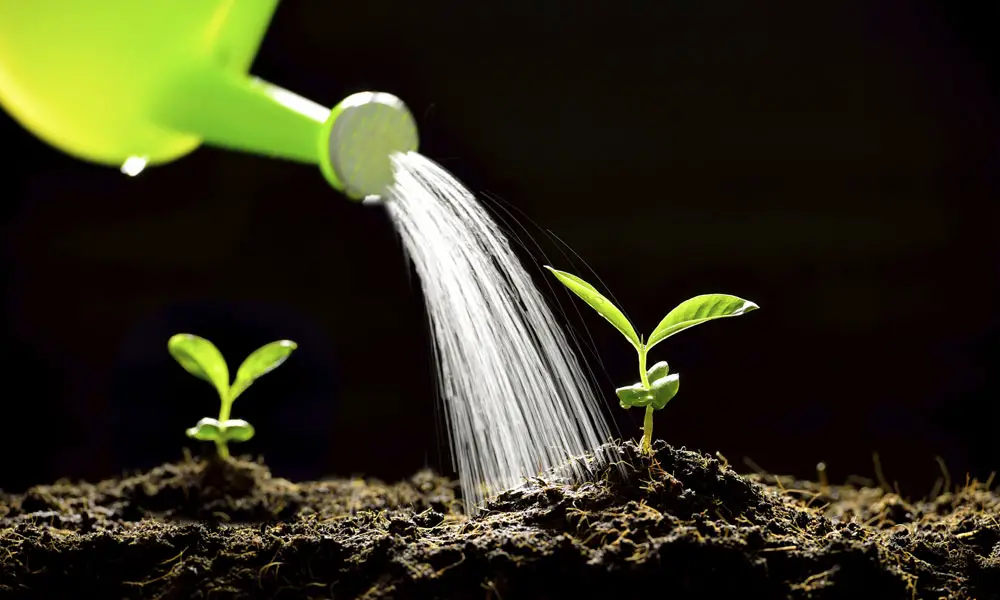
Fertilizing
While Zanzibar Gems are not heavy feeders, occasional fertilization can encourage healthy growth. Follow these guidelines for fertilizing your zz plant:
Use a balanced liquid fertilizer: Dilute the fertilizer to half strength and apply it to the soil every 2-3 months during the growing season. Avoid fertilizing during the dormant period, as the plant’s growth slows down during this time.
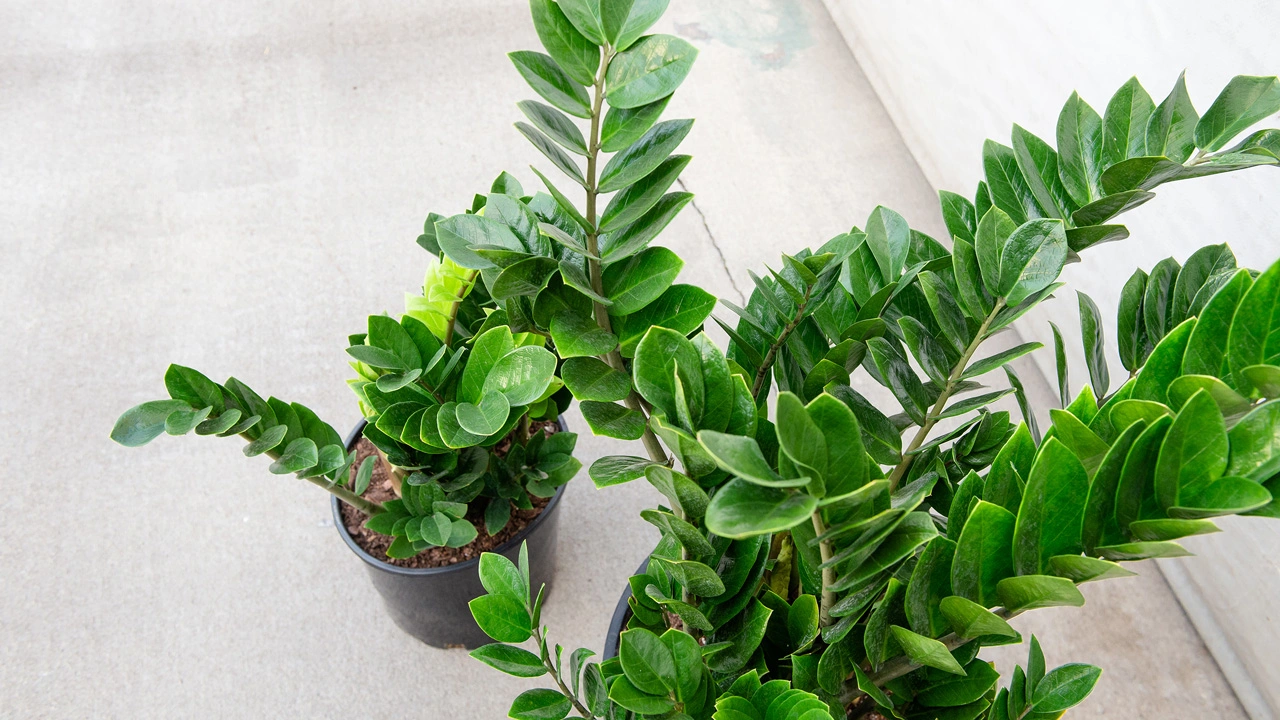
Pruning and Maintenance
Regular pruning and maintenance are essential for keeping your Zanzibar Gem looking its best. Here’s what you need to know:
Remove dead or yellowing leaves: Pruning off any dead or yellowing leaves helps improve the overall appearance of the plant and prevents the spread of disease. Dust the leaves: Use a soft cloth or a gentle spray of water to remove dust from the leaves, allowing them to photosynthesize more efficiently.
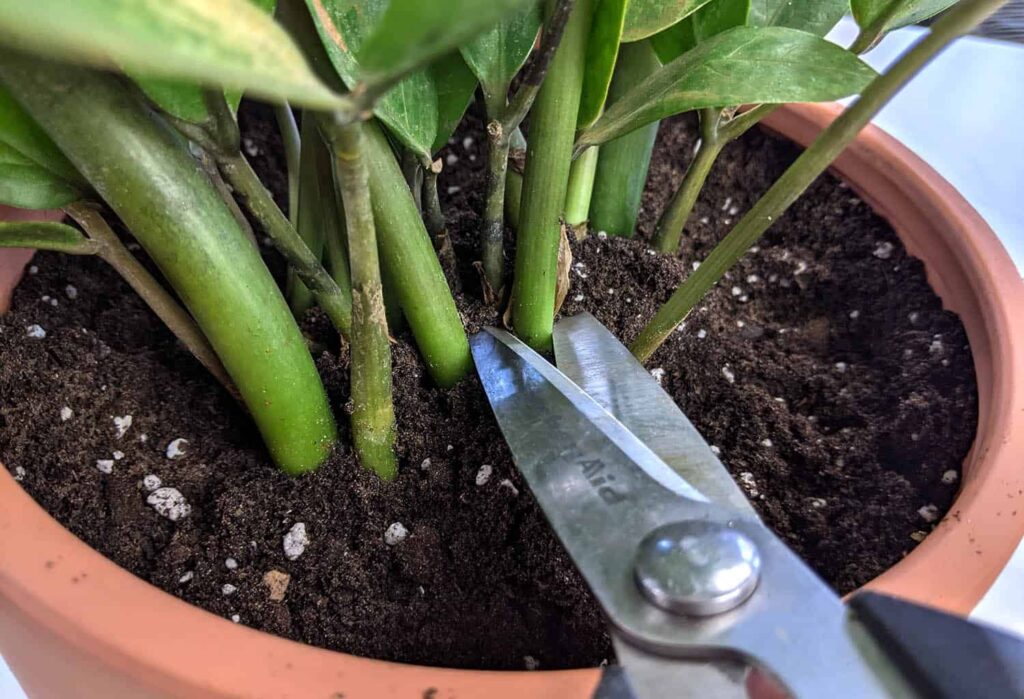
Propagation
Interested in expanding your zz plant collection? Propagating Zanzibar Gems is relatively straightforward. Here’s how to do it:
Divide the plant: Carefully separate the rhizomes (underground stems) with a sharp, sterilized knife, ensuring each division has healthy roots and stems. Plant the divisions in separate pots filled with well-draining soil and water thoroughly.

Dealing with Common Issues
Despite their robust nature, ZZ plants may encounter occasional setbacks that warrant prompt intervention. Recognizing common issues and implementing corrective measures is essential for safeguarding the well-being of your cherished specimens.
Overwatering Woes: Navigating the Perils of Excess Moisture
Overwatering poses a primary threat to ZZ plants, manifesting in symptoms such as soft, droopy foliage and yellowing leaves. Soil saturation can lead to root rot and subsequent decline, necessitating immediate remediation. Assessing soil moisture levels and adjusting watering frequency accordingly mitigates the risk of overhydration, preserving the health and vitality of your beloved ZZ plants.
Toxic Tidings: Understanding ZZ Plant Toxicity
It’s imperative to exercise caution when handling ZZ plants, as all parts of the plant are toxic if ingested by humans or pets. Symptoms of toxicity range from gastrointestinal distress to dermatological reactions upon contact with sap. Educating household members and visitors about the potential hazards associated with ZZ plants minimizes the risk of accidental ingestion or exposure, ensuring a safe and harmonious environment for all.
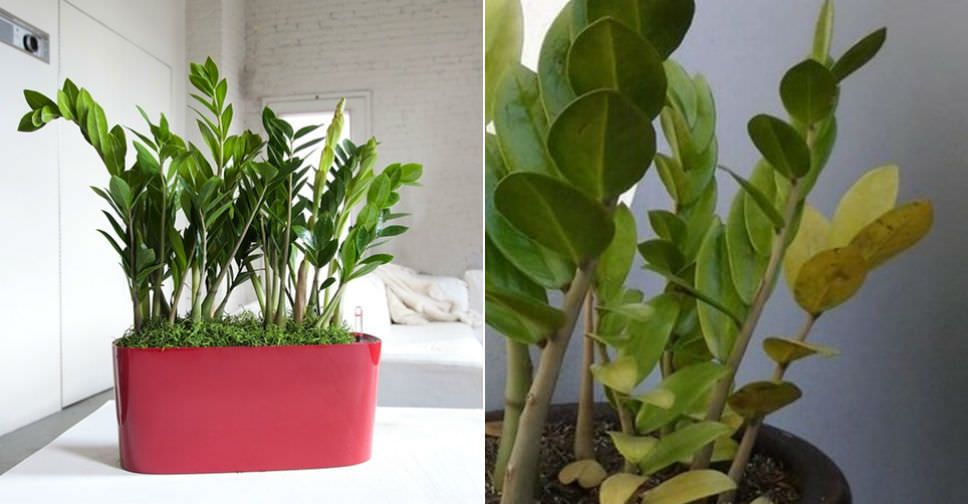
Congratulations! You’ve now mastered the art of zz plant care: (Zanzibar Gem) Growing & Care. By following the tips and guidelines outlined in this comprehensive guide, you can ensure that your Zanzibar Gem thrives and adds a touch of natural beauty to your indoor space. Remember, patience and consistency are key when it comes to nurturing houseplants, so don’t be discouraged if it takes some time to see results. Happy gardening!
FAQs
Does ZZ plant need sunlight?
ZZ plants can tolerate low light conditions, but they prefer bright, indirect sunlight. Place them near a window with filtered sunlight for optimal growth .
How do you care for a ZZ plant indoors?
- Water ZZ plants sparingly, allowing the soil to dry out between waterings.
- Place them in well-draining soil and pots with drainage holes to prevent root rot.
- Keep them in temperatures between 65-75°F (18-24°C) and avoid cold drafts.
- Provide occasional fertilization during the growing season with a balanced houseplant fertilizer .
Where should I place my ZZ plant at home?
- Choose a location with bright, indirect sunlight, such as near a north or east-facing window.
- Avoid placing them in direct sunlight, as it can cause leaf burn.
- ZZ plants can thrive in various rooms of the house, including living rooms, bedrooms, or offices.
How do you make a ZZ plant happy?
- Provide adequate light without exposing them to direct sunlight.
- Water them sparingly and ensure the soil dries out between waterings.
- Maintain consistent temperatures and protect them from cold drafts.
- Avoid overwatering and ensure proper drainage to prevent root rot.
Is it okay to keep ZZ plant in bedroom?
Yes, it’s okay to keep ZZ plants in the bedroom as they can tolerate low light conditions and are considered safe for pets.
Why is my ZZ plant dying?
- ZZ plants can suffer from overwatering, which leads to root rot.
- Inadequate light or exposure to direct sunlight can cause leaf burn.
- Cold drafts or temperature fluctuations may also contribute to plant stress and decline.
